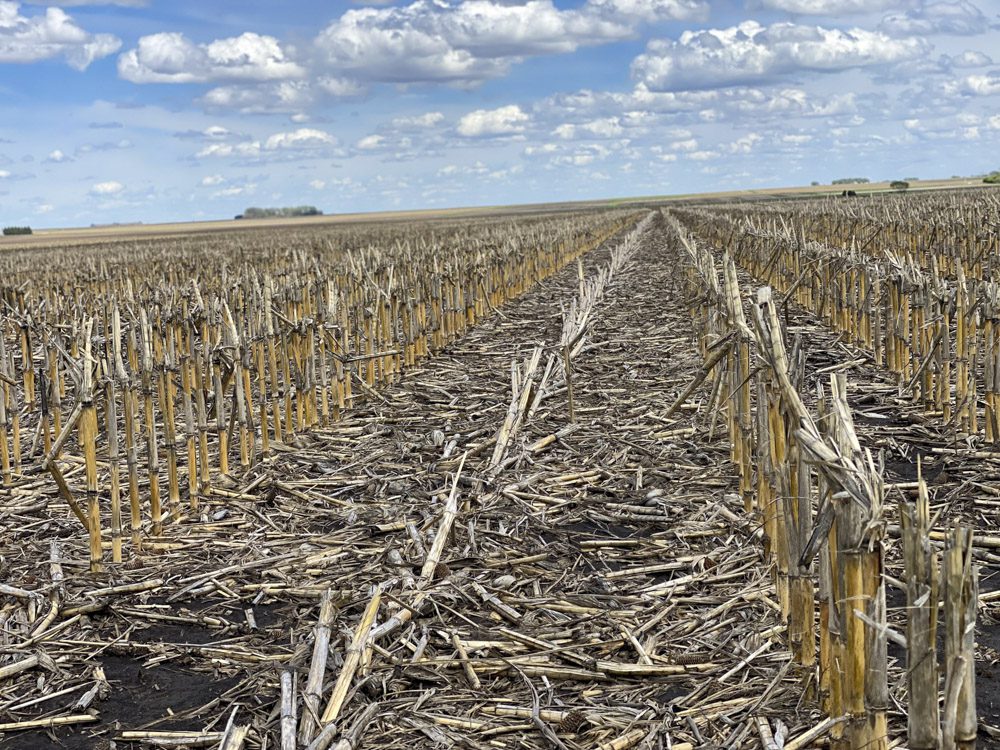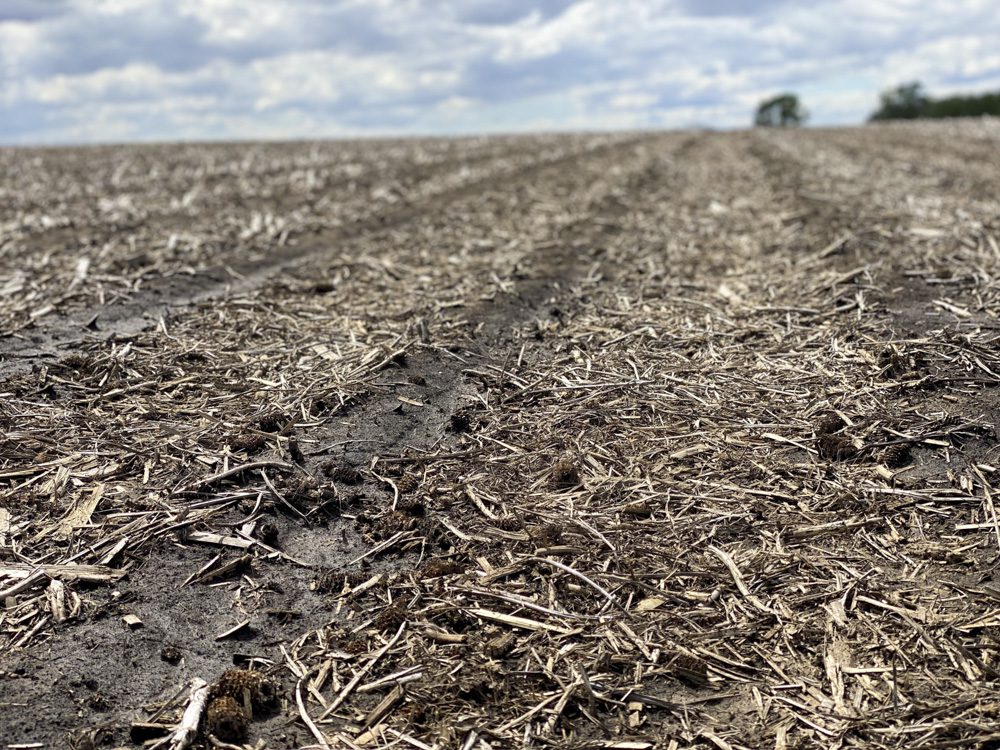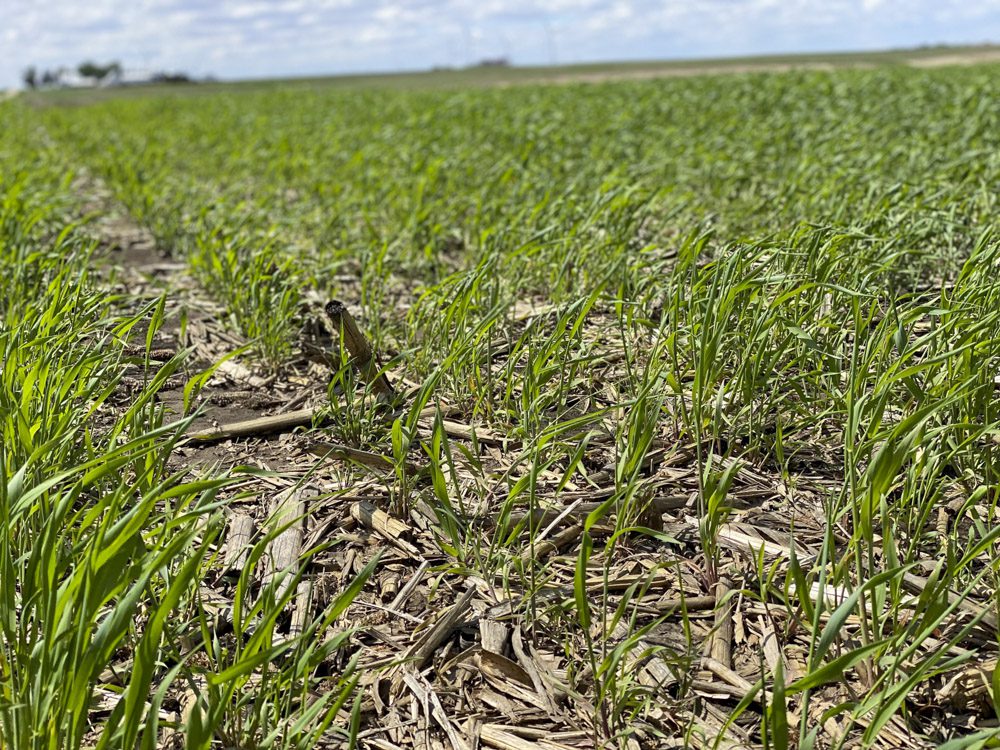Conservation
Farmers are one of the greatest land conservationists. Soil is our greatest resource, it grows the crops that go into almost every aspect of life. Feed for livestock, even the fuel in our cars. Farmers are one of the greatest land conservationists. Over time our practice’s changing have resulted in increased yield to meet the growing population.
Conservation Practices
There are many practices a farmer can implement to reduce soil and water erosion. The higher the investment, the higher the reward. Improved nutrient management can help soil be more regenerative.

No-Till
Process of leaving the ground undisturbed and planting the year’s crop into residue. Increased organic matter and soil fertility are the two key benefits as well as decreased cost per acre in operation and increased yields over time. You will also see increased water holding capacity which can be helpful in dryer years.
Picture description: You may give up that freshly worked dirt smell but there are immense benefits to no-tilling. Corn stalks in fields like this break down and provide nutrient and organic matter to increase soil health.


Strip-Tillage
Blend of full tillage and no-till. It is the process of tilling narrow strips that will be planted into and the rest of the field would be undisturbed. Strip tillage may also include the application of nutrients such as anhydrous ammonia or a dry product like potassium and phosphorus.
Picture description (top): There are many types of strip-till bars on the market. Shown here is a shank and coulter style that is being used to put anhydrous ammonia on bean stubble after harvest. The toolbar is also tracking its pass to better plant in to in the upcoming spring planting season.
Picture description (bottom): Seed bed prep is important for all planting situations. Strips like these are made to be planted directly in to without disturbing the full width of a pass.

Cover Crops
Broadleaf or grass plant species that are planted as a means of covering the soil and reducing erosion in the off season and sometimes during the crop season. Cover crops help with increased organic matter and soil fertility. Cover crops can also be beneficial for livestock through increased grazing time or by harvesting for feed.
Picture description: There are many different types of species of cover crops that can be implemented on a farm. Here we see perennial rye in corn stalks as a means of reducing soil erosion and increasing the grazing potential for livestock.
Programs
There are multiple programs that AgState has partnered with to get the most out of the adoption of conservation practices.
Financial Incentives and Cost-Share
Above all your practice should be not only practical, but profitable. Conservation programs incentivize the adoption of new practices as well as act as a cost-share to help pay for the implementation of said practices.
Soil and Water Outcomes Fund
Pays farmers to implement new practices on their farms such as tillage reductions and cover crops. No acre limit, 1-year contracts, and 50% paid at the start of the contract.
Truterra
Pays farmers for the carbon they sequester on their farms. If you have been no-till farming for multiple years or already adopted the use of cover crops.
Farmers for Soil Health
https://farmersforsoilhealth.com/
Cover crop cost share program and provides assistance and resources for the adoption of cover crops.
Got a big project like a bioreactor or oxbo regeneration? We want to help!
Some programs may be better for your farm than others and some programs can be stacked with government programs. If you would like more information on these programs please reach out to our conservation agronomy and sustainability lead.
Conservation Contact

Garrett Wagner
(p) 712.446.3307 (c) 712.291.0721
312 South Railroad Ave. Calumet, IA 51009
